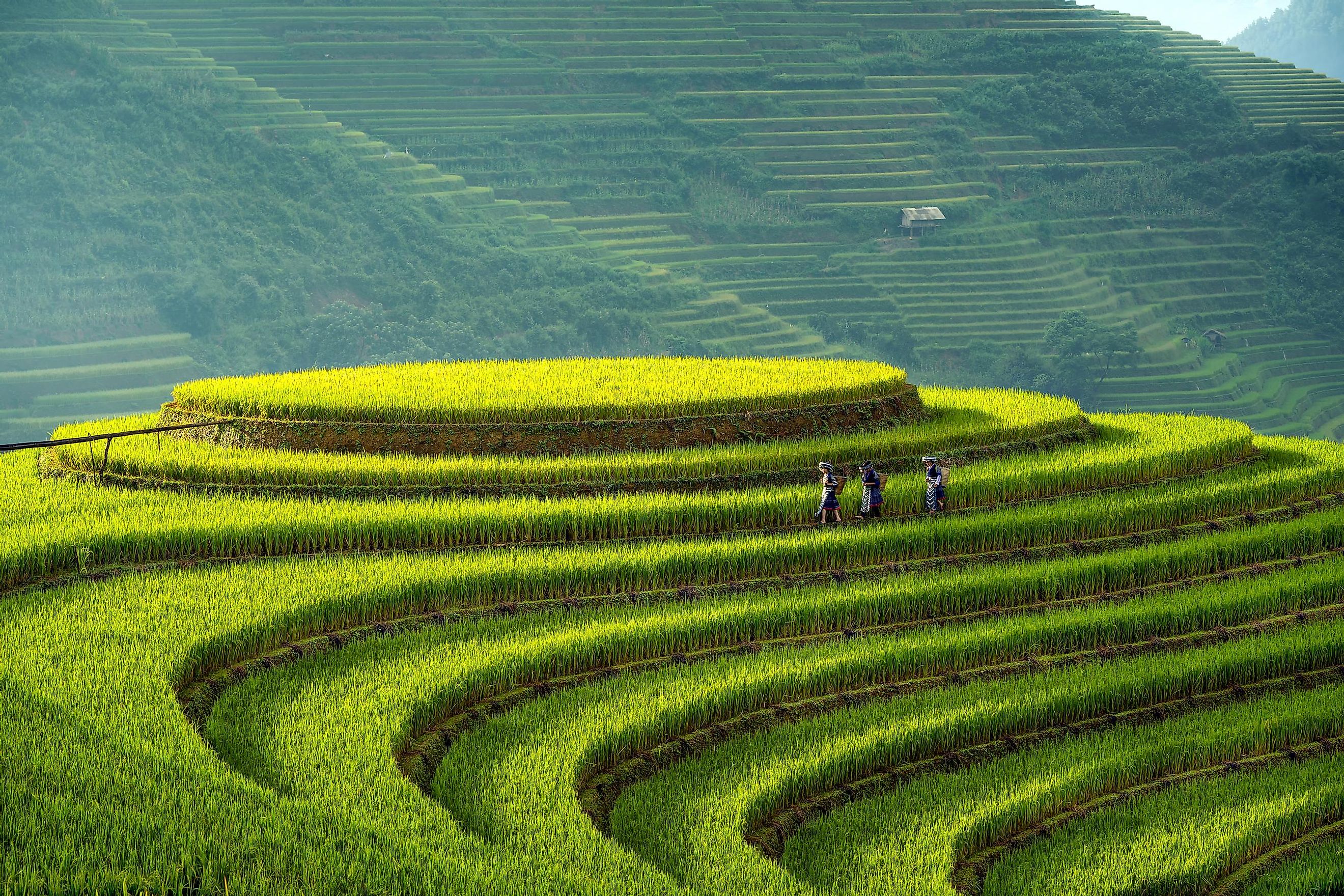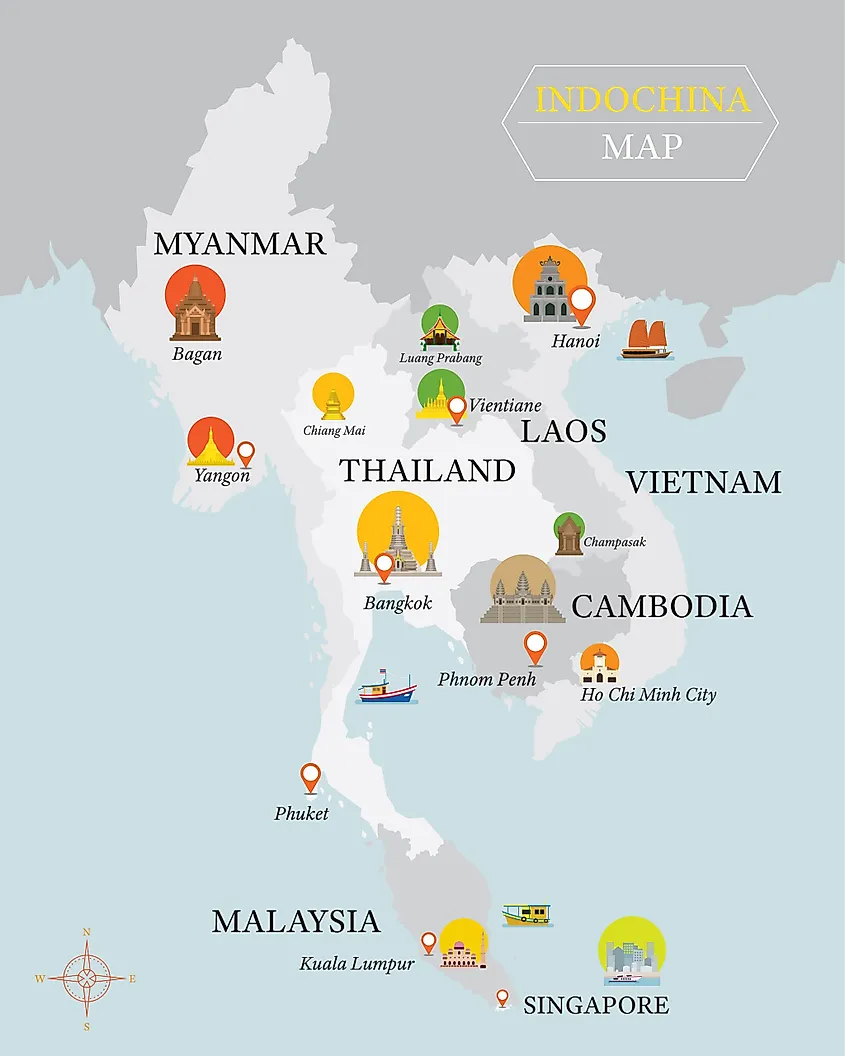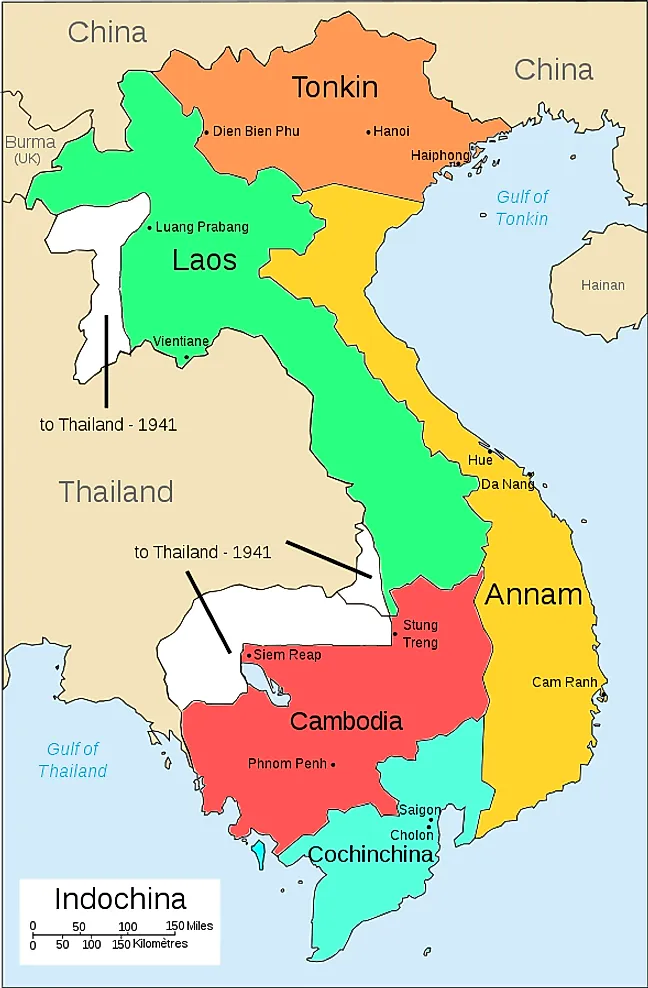
Indochina
The geographical term "Indochina" first originated in the early 19th century and was used to refer to the mainland region of Southeast Asia. The name Indo-China was originally used to refer to the geographical areas that were culturally influenced by both the Indian and Chinese cultures due to its strategic location between the two countries. From 1887 to 1954, the term was adopted as the name of the French colonial territories that consisted of the modern-day countries of Cambodia, Laos, and Vietnam. Currently, the entire region of Indochina is referred to as Mainland Southeast Asia or more commonly as the Indochinese Peninsula.

The Indochinese Peninsula is geographically positioned south of the People’s Republic of China and east of the Indian Subcontinent. The peninsula is bounded by the Pacific Ocean in the east and by the Indian Ocean in the west. The countries that are a part of the Indochinese Peninsula include Myanmar, Cambodia, Laos, Vietnam, Thailand, and Peninsular Malaysia.
The name "Indochina" was first used by the Danish-French geographer Conrad Malte-Brun and the Scottish linguist John Leyden. In 1804, Conrad Malte-Brun referred to the area as Indo-chinois, while in 1808, John Leyden used the term “Indo-Chinese” to describe the inhabitants of the area.
French Indochina
French Indochina was formed on October 17, 1887, and comprised of the colonies of Cochinchina, the French protectorates of Annam and Tonkin, the Kingdom of Cambodia and parts of Laos and the Chinese territory of Guangzhouwan.
From 1807 to 1902, the territorial capital was the city of Saigon (now, Ho Chi Minh City). From 1902 to 1945, the capital was shifted to the city of Hanoi and from 1945 to 1954, the city of Saigon was once again considered as the territorial capital.

The Tonkin area in the northern part of Vietnam was occupied by the Japanese in 1940, followed by the rest of Indochina in 1941. After the fall of France in the Second World War, the French colony was ruled by the local Vichy government. The Japanese overpowered the local French government in March 1945. Japanese rule in Indochina collapsed after the surrender of Japan at the end of the Second World War in August 1945. During this time, the Viet Minh party under the leadership of Ho Chi Minh, the Vietnamese Nationalist leader, declared Vietnamese independence, assumed power and formed the Democratic Republic of Vietnam.
France subsequently reoccupied the areas of French Indochina and established the Indochinese Federation, in which the Democratic Republic of Vietnam was considered an independent state. On December 19, 1946, the First Indochina War broke out between the French and the Viet Minh. In 1953, the Kingdom of Laos and the Kingdom of Cambodia proclaimed their respective independence and became self-governing states within the French Union. The Vietnamese forces too defeated the French in 1954. With the signing of the Geneva Accord at the Geneva Convention in 1954, the French relinquished all their claims over this area, and all the three countries, Cambodia, Laos, and Vietnam, became independent nations.











